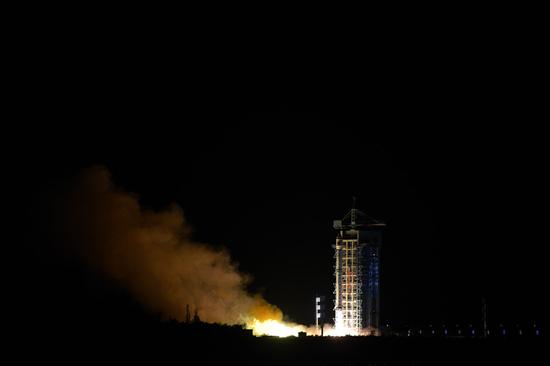Recently, a team from the National Astronomical Observatories of Chinese Academy of Sciences discovered 76 intermittent pulsars in the Galactic Plane Pulsar Snapshot Survey, including the faintest known pulsars to date, using China's Five-hundred-meter Aperture Spherical Radio Telescope (FAST), the Global Times learned from the scientific team.
The team also conducted high-sensitivity observations of 59 known rotating radio transients (RRAT) using FAST and confirmed that RRATs are indeed intermittent pulsars. The related research results were published on Monday as a cover paper in the international astronomical journal.
Since the discovery of the first RRAT in 2006, more than 160 RRATs have been discovered by radio telescope around the world.
The research team from the National Astronomical Observatories used a self-developed efficient single-pulse search program to systematically search for single pulses from the survey data.
They discovered 76 new dim and weak RRATs and classified them into four categories, including 26 radio transient sources without a detected rotation period; 16 standard RRATs with confirmed periods; 10 extreme nulling pulsars that remain silent for long periods but emit short-duration periodic signals; and 24 extremely dim and weak pulsars with occasional strong pulses.
The intermittent pulsars discovered by single-pulse search technology account for approximately 12 percent of the total number of pulsars discovered in the FAST survey. Compared with normal pulsars, the intermittent pulsars discovered by FAST have a lower flux density, with the lowest reaching sub-microjansky levels.
To gain a deeper understanding of the physical properties of RRATs, the team also observed 59 known RRATs reported internationally using FAST. Due to the high sensitivity of FAST observations, none of these 59 RRATs exhibited characteristics of standard RRATs. China's FAST also detected the polarization signals of these intermittent pulses and found that their polarization position angles followed the polarization position angle curve of the average pulse profile, indicating that the intermittent strong pulses of RRATs and the extremely weak pulses of normal radiation originate from the same region in the neutron star's magnetosphere, the Global Times learned.
This study is of great significance for understanding the dense remnants of dead stars throughout the Milky Way and their radiation characteristics, experts said. And high-sensitivity observations are key to revealing the astrophysical features of these objects.


















































 京公网安备 11010202009201号
京公网安备 11010202009201号